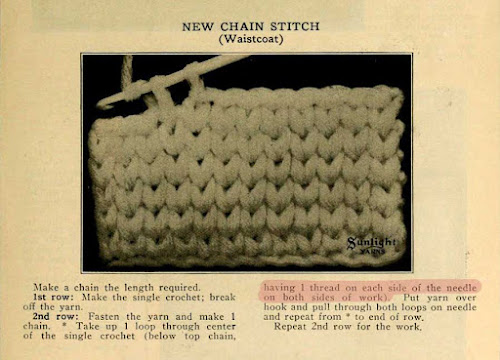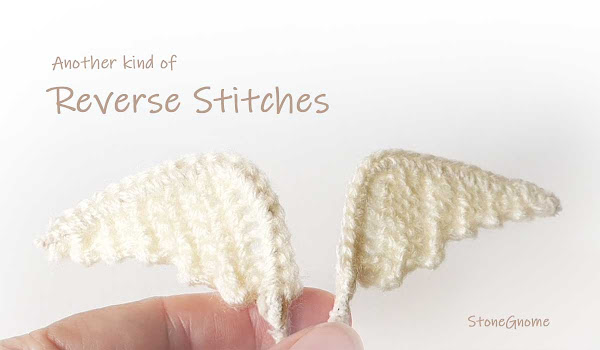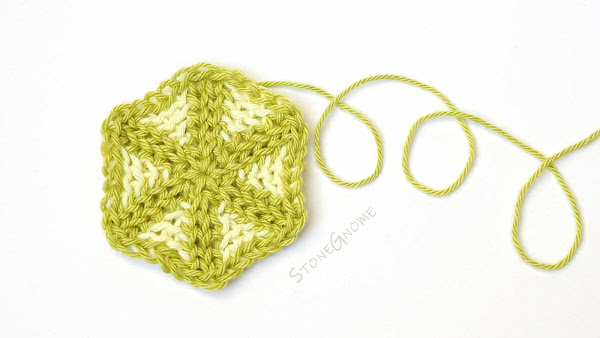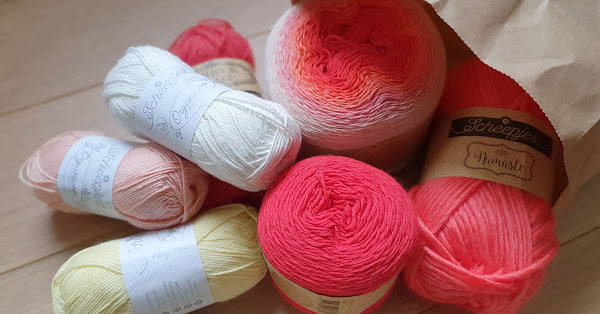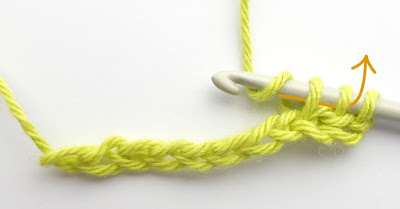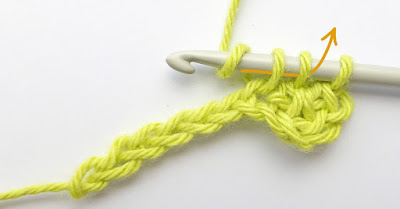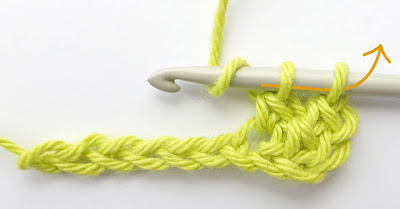The waistcoat stitch is a brilliant two-faced thing. But be aware of the waistcoat stitch trap!
To unlock the waistcoat stitch's full potential, it helps to know its secrets and understand the nuances of the waistcoat stitch.
Most crocheters call the waistcoat stitch dense and sturdy while a few of us love it for its drapiness and flexibility.
And why is that? Because there are at least TWO versions of the waistcoat stitch! They differ slightly in appearance and significantly more in structure and flexibility.
You should know about both versions, so you can choose which one to use for a project.
How to Work the Waistcoat Stitch(es)
The Basics
The stitch is created by inserting the hook between the legs of the next stitch.And then there is a trap: There is a vertical bar at the back of the stitch*. It matters whether the hook is inserted before or after this vertical bar. Zoom in at the topmost image to see it.
*Note. Actually, there are two bars at the back. The main culprit is a very straight up-and-down (vertical) bar, while the other is slanted and sits on the side of the stitch. The slanted strand is positioned so far to the side that I doubt anyone considers using it today when working a 'normal' waistcoat stitch. If we count it, we have 3 versions of the stitch. I will disregard this 3rd version for now.
The Most Common Waistcoat Stitch version
Most crocheters naturally insert the hook AFTER the vertical bar at the back. For right-handed crocheters, this is at the left side of the back bar. This is the natural motion when you have the hook in one hand and push it into a stitch.
This gives you one version of the stitch. The denser one.
Currently, the tight version of this stitch is commonly demonstrated in tutorials for the waistcoat stitch. It is likely that most crocheters are not aware of the alternative option or do not consider it to be important.
The 'Secret' Waistcoat Stitch version
Another option is to insert the hook BEFORE the bar at the back. For right-handed crocheters, this means inserting the hook at the right side of the back bar.
This gives you another version of the stitch. A stitch with more drape.
Stitch Hacks
There are different approaches of how to insert the hook when working the last stitch version.
Method #1
Some crocheters elegantly twist their hook, angling it more directly into the stitch or even slightly backward, in the opposite direction. Some of my testers prefer this.
Olga Poltava recently uploaded a YouTube video demonstrating this way of entering a stitch.
Method #2
I prefer to use the lip/nose of my hook to guide the hook into the right place. If necessary, I can use my fingertip at the back of my work to keep the back bar clear of the hook
If you want to try the nose/lip first, then take a look here:
If you want to try the nose/lip first, then take a look here:
Tips for the Drapey version
- Find a hook that works for you AND the stitch. Avoid a bulb-headed hook. It's challenging to insert a very blunt crochet hook into the center of a stitch.
I prefer a tapered hook. However, I did have testers that worked fine with Susan Bate's inline hooks. - Crochet lose and control your tension. Once you have pulled up a loop lift your hook a little above the work to crochet looser.
Read more: How to Change and Control Your Tension
And be patient. If you've never tried this version before, it's like learning a new stitch, so, it may take some time to become accustomed to.
What is the difference?
There are differences between the two versions.
Leaning and Dense
The dense version of the stitch captures more yarn, resulting in a structure where the strands are more entangled and closely packed together within each stitch. This tight interlocking of strands reduces flexibility.
As the denser stitch version grabs the back bar, it is pulled slightly to the side, causing the waistcoat stitches to lean.
On the wrong side of the work, the stitches create a neatly structured yet slightly skewed pattern, with the stitches shifting. Being an organized chaos or a coordinated mess.
Straight and with Drape
The less dense version of the waistcoat stitch doesn't grasp the back bar. This allows the strands within each stitch to move more freely, resulting in greater flexibility in the work. Additionally, capturing less yarn means the fabric becomes slightly lighter, creating a thinner texture. With a looser structure, the fabric also gains more drape.
The less-dense waistcoat stitch version hardly leans at all.
On the wrong side, the stitches also line up beautifully inside each other.
The origin of the Waistcoat Stitch(es)
It is often impossible to determine the exact origin of a stitch, though in this case, we have an approximate idea.
In 2013 Oombawka wrote about the waistcoat stitch and found a book from 1915 (thank you for sharing, Rhondda). The book refers to the waistcoat stitch as 'the new chain stitch', so it is possible the stitch was a recent development when the book was written.
I recently dug into the same book and was quite surprised to find BOTH versions of the waistcoat stitches in there.
Understanding the instructions might be a bit difficult. I have highlighted the important parts showing the differences in the working methods of the two stitches. The pictures also provide a clue to distinguish between them.
It looks to me like the New Chain Stitch is the drapey version of the waistcoat stitch. It looks like the stitches should line up on both sides of the work.
The second waistcoat stitch version in the book is a slanted version. At the time it was called the German Waistcoat stitch.
Just to be fair. It is unclear whether the hook is inserted to the left of just one back bar or possibly to the left of both back bars, including the slanted one.
Which Waistcoat Stitch Version to use?
If a pattern does not specify a certain stitch version, it's likely that the designer is only familiar with the 'German' waistcoat stitch version and designed the pattern accordingly.
Then you can choose what to use:
- Opting for a small hook and the dense 'German' version of the stitch results in a tight, dense, and thick fabric. Cotton yarn emphasizes this. Great for sturdy things like a hat or maybe amigurumi. You also get a nice spiral look, that can be very decorative.
- Choosing a large hook and using soft, flexible yarn to work the drapey version of the stitch results in a fabric that looks and works more like stitch-stretchy knitted stockinette. Smooth and soft. This fabric is ideal for wearables, blankets, and even softer types of amigurumi, although using a smaller hook may be preferable to keep the filling in place.
I suggest you choose what works better for a specific project and for the result you want to achieve.
Enjoy your next waistcoat stitch project :)




